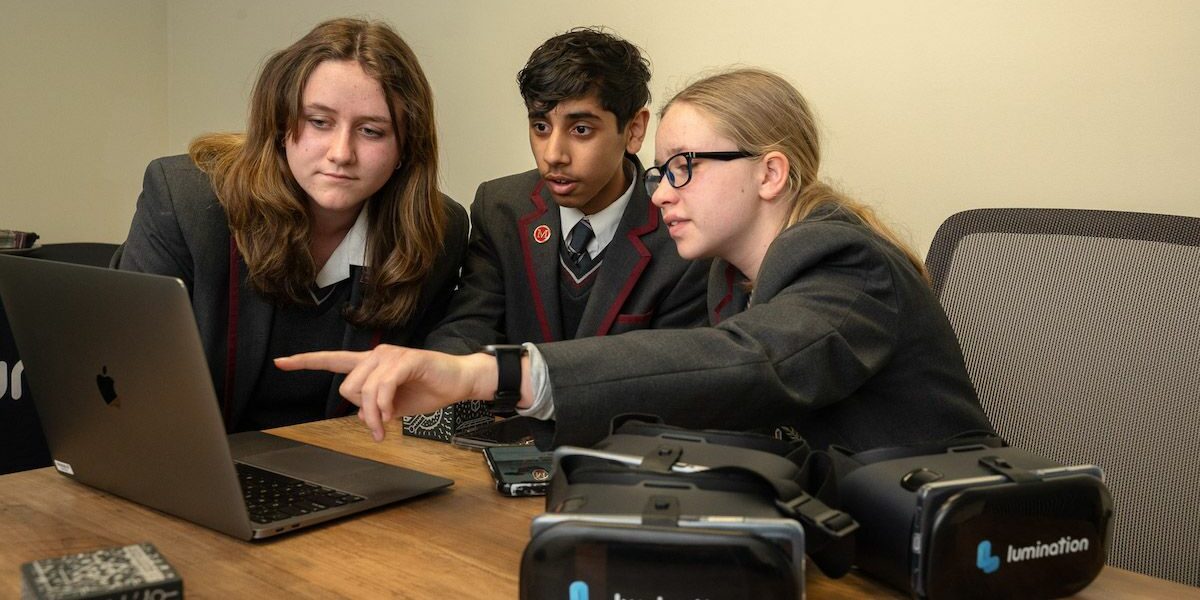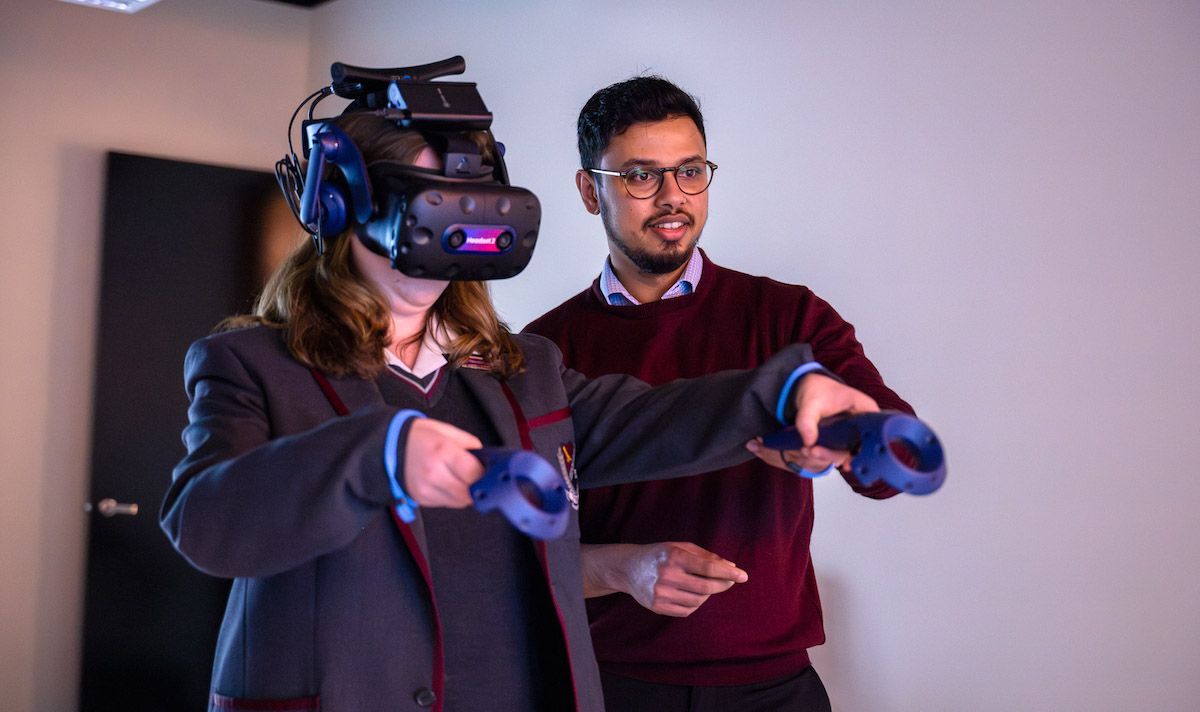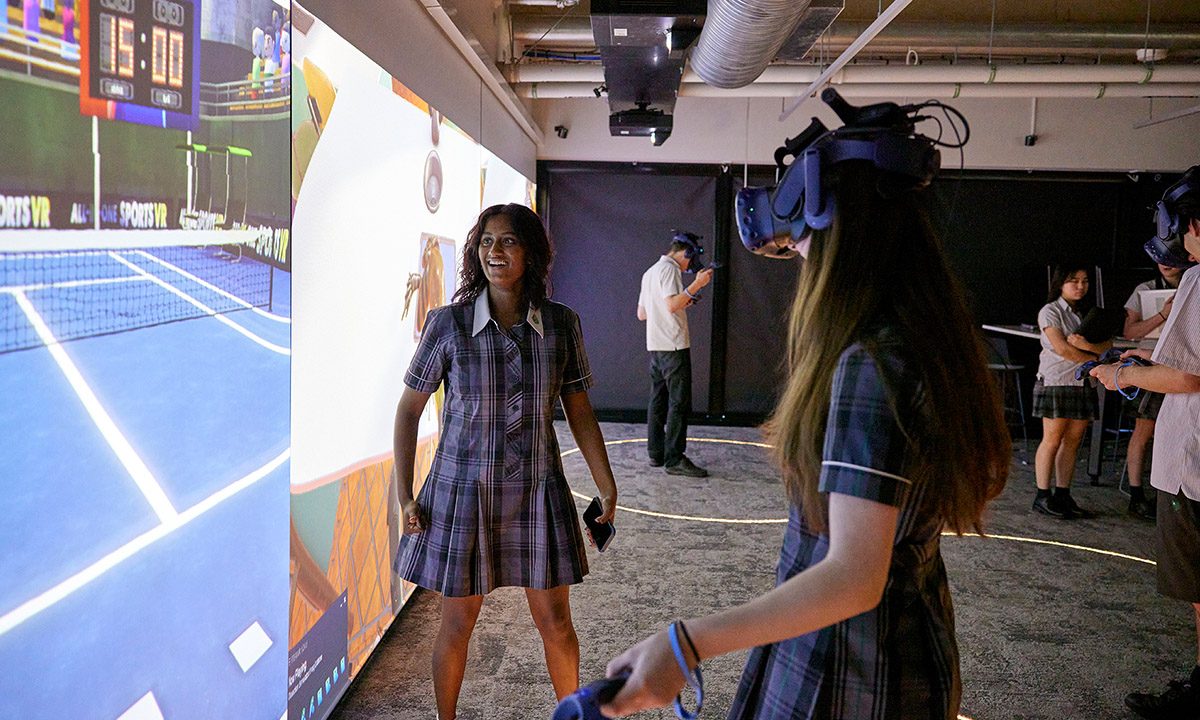Author: Lumination
Date: 22nd Sep 2023
XR Learning Boosts Student Engagement with Powerful AR and VR Teaching Methodologies
What happens when AR and VR come together in the classroom? The result is XR – or extended reality – learning. This involves using immersive technologies to better equip our students for the challenges of tomorrow. Focusing on student engagement in particular, let’s take a look at how these solutions are changing the landscape.
Defining Student Engagement
Rebecca Bendikov, our Head of Education Programs, defences student engagement like this:
“Student engagement refers to the degree of attention, curiosity, interest, optimism and passion that our students are showing when they’re learning or being taught. This extends to the level of motivation they have to progress in their education, and often translates to tangible things, like performance in assessments.”

Types of Student Engagement
However, student engagement is not monolithic – there are different types of student engagement that educators need to be aware of.
Observable
Teachers may observe evidence of engagement or disengagement in the classroom, watching how students respond to certain lessons or topics or to learning in general. Academic and behavioural engagement may overlap with this category.
Academic
The academic type of student engagement can be measured by looking at students’ performance, like their completion of homework or their scores on assessments.
Behavioural
This is linked to student behaviours at school – for example, disengaged students may misbehave and distract others.
Internal
Internal engagement centres on the student’s perception of schoolwork and how it aligns with their personal goals and sense of self. This may or may not be displayed overtly.
Cognitive
Cognitive engagement is another form that may not be observable – this is how students apply their problem-solving skills to the tasks they encounter.
Affective
Affective engagement is also difficult to identify but relates to the student’s belonging within the school community itself.
XR Learning Through the Years
When teachers bring AR and VR technology into the classroom as part of a strategy of XR learning, this can support engagement across the student’s entire journey.
Foundation to Year 2
Students are introduced to augmented reality.
Years 3 and 4
Students use AR and VR, exploring basic creation through general tools.
Years 5 to 8
Students use general tools to develop more advanced creations with each successive year.
Years 9 and 10
Students begin using more specialised creative tools.
Years 11 and 12
Students use specialised tools for advanced creation, focused on direct application in industry.
At Grange Primary School, we’ve seen how XR learning can be used to great effect. A group of 78 students in year six struggled to understand why their lesson on geographical diversity in Asia was important, and many were growing bored.
With virtual reality technology in the Lumination Learning Lab and Google Earth VR, the students were able to develop real interest and hit their learning objectives effectively. Read more about this in our case study from this program.
=
Capturing the Classroom
While immersive XR technologies can be very useful in learning, how can teachers manage the classroom and keep all students engaged at all times? This is where station-based learning can make a real difference. With station-based learning, tasks are broken down into core elements, and a station within the classroom represents each element.
So, while Student Group 1 deals with Station 1, Student Group 2 works on Station 2, and so on. The student groups cycle through to the next task when each station is completed. This means no students are left idling or unsure of what to do.
What does the Research Say About AR and VR in Education?
The research certainly suggests that XR learning – combining AR and VR in education – is achieving great results in the classroom.
- In conjunction with ISTE, an XR Association study concluded that 77% of teachers believe XR learning inspires curiosity and increases student engagement.
- A study conducted at Southern New Hampshire University found that 87% of students said that VR lessons were useful and enjoyable, stating that they would like to use this technology in the future.
- Research from Cornell School found that 78% of students said they preferred VR learning to traditional hands-on methods, saying it was “more fun” and “more immersive”.
Explore the Potential of XR Learning with these Lesson Plans
It’s time to put XR learning to work at your school. Take a look at these lesson plans to get started.
Ready to learn more about XR immersive technologies and AR and VR in the classroom? Use the form below to request a demo of our Lumination Learning Labs suite of solutions.
Gain Access To Our Webinar Recording
Registration form used to gain access to our recorded webinars.
"*" indicates required fields


